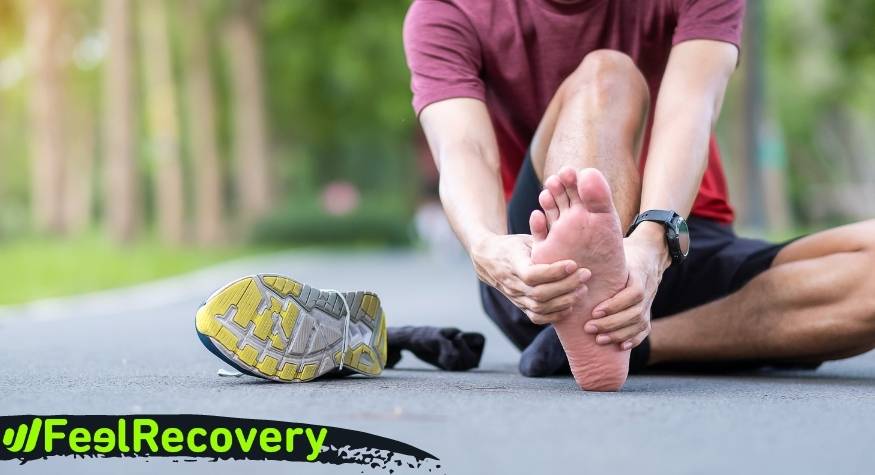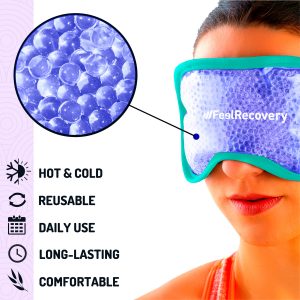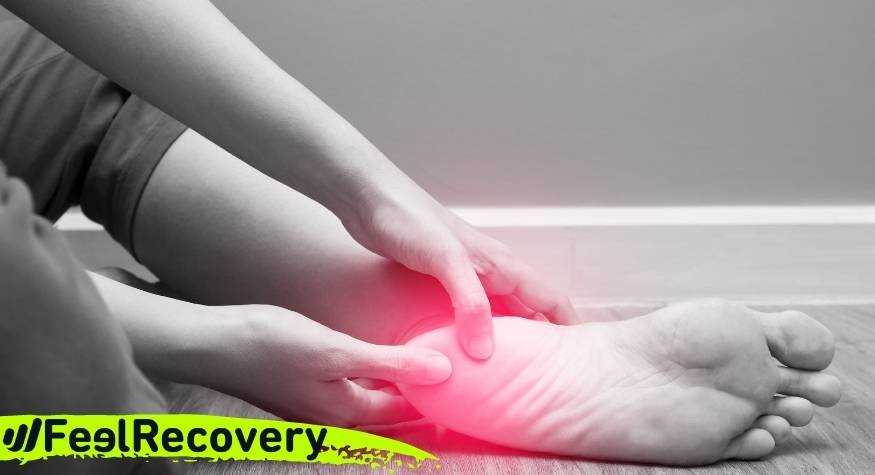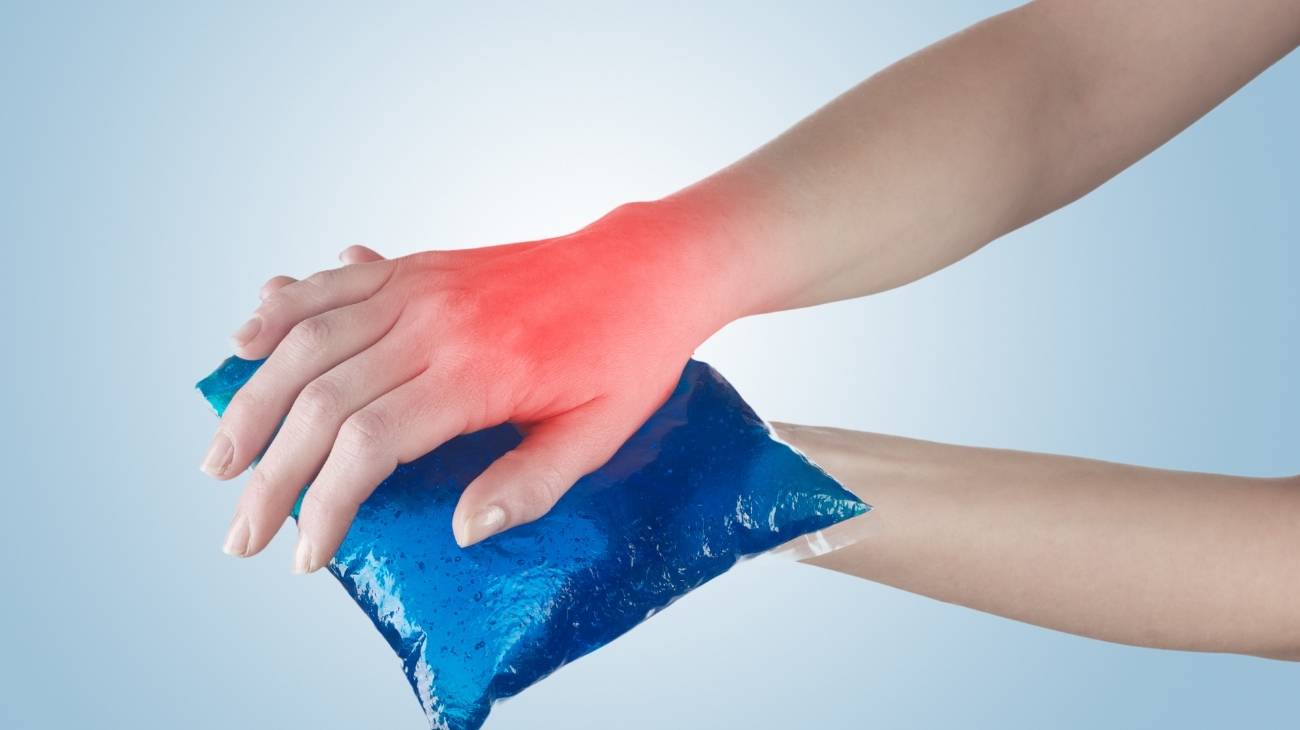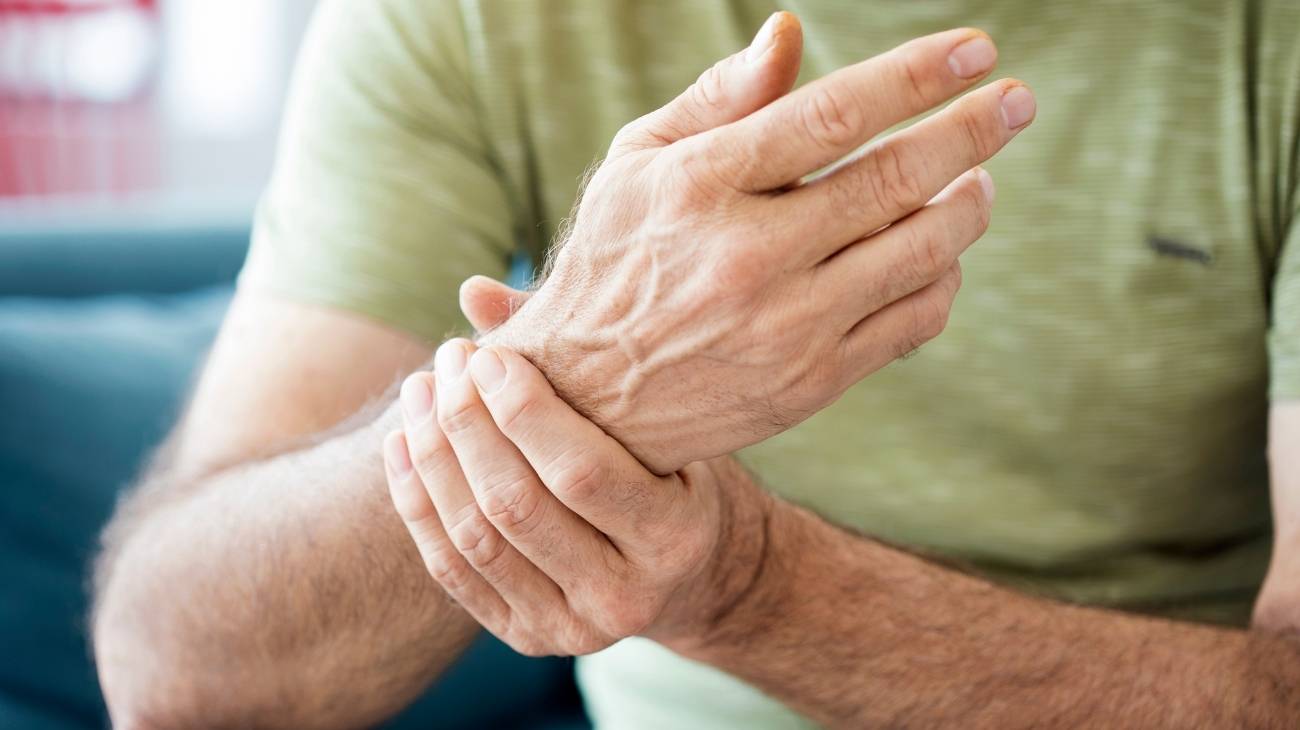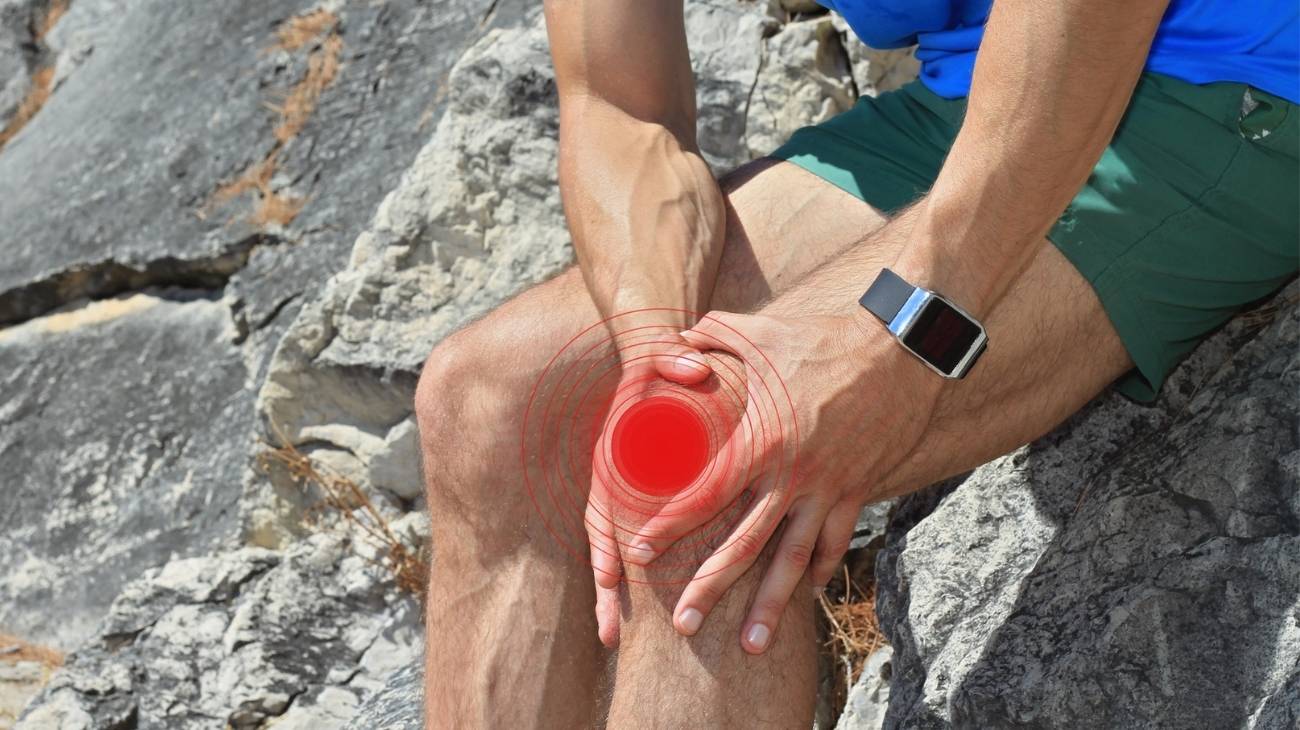Plantar fasciitis is an injury that causes terrible pain in the heel and sole of the foot. It is a very common ailment in runners, although obese and elderly people can also develop it.
Cryotherapy and contrast therapy are highly recommended to treat this injury. So we want to tell you what causes this condition and how to use hot and cold gel packs to relieve the pain of plantar fasciitis of the foot. Let's get started!
What are the causes and origin of foot pain from plantar fasciitis?
The plantar fascia is a thick band of connective tissue found on the sole of the foot. This tissue connects the calcaneus (heel bone) to the toes and supports the plantar arch. It also absorbs and returns the energy associated with the impacts of the foot on the ground.
The inflammation of this band is medically known as plantar fasciitis. This injury is characterised by a shooting pain on the sole of the foot near the heel, just where the plantar fascia connects to the calcaneus. The pain associated with this lesion is often manifested by walking after waking up. With the rest of the night the plantar fascia contracts a little and during the first steps of the day the traction on it is stronger.
As this band is stretched the painful sensation decreases. The pain can also appear after physical exercise or at the end of the day when standing for a long time. This injury occurs due to the repetitive stretching and tearing of the plantar fascia, which ends up irritating or inflaming this band.
The main causes of plantar fasciitis are:
- Physical activity: Walking, running or standing for a long period of time, especially on hard, irregular or sloping surfaces. This often occurs in the context of certain work or recreational activities. Teachers, sportsmen (runners, athletes...), ballet dancers, factory workers, among others, are prone to plantar fasciitis.
- Inadequate material: Wear shoes that have a soft sole, do not fit well or do not adequately support the plantar arch.
- Muscular tension: Shortening or tension in the calf muscles and the Achilles tendon. It should be noted that the use of high-heeled shoes produces shortening in the gastrocnemius (calves).
- Age: Weakening of the tissues of the foot due to natural ageing. In fact, people between 40 and 60 years of age are prone to this injury.
- Obesity: When a patient is overweight, the pressure on the plantar fascia is greater than normal.
- Problems in the mechanics of the foot: Having a high arch, flat foot or an abnormal way of walking can affect weight distribution. These conditions result in greater stress on the plantar fascia.
- Pregnancy or hormonal changes: Generally, hormones can cause the tissues to become more flexible than normal.
Bestseller
-
Gel Eye Mask for Puffy Eyes (Gold/Black)
£9,95 -
Gel Eye Mask for Puffy Eyes (Orange/Pink)
£9,95 -
Gel Eye Mask for Puffy Eyes (Purple/Turquoise)
£9,95 -
Ice Pack for Foot - Cold Therapy Socks (Black)
£21,95 -
Ice Pack for Foot - Cold Therapy Socks (Green)
£21,95 -
Ice Pack for Foot - Cold Therapy Socks (Pink)
£21,95
What is best for reducing pain on the sole of the foot from plantar fasciitis, cold or heat?
The application of high and low temperatures can be part of the treatment of plantar fasciitis. In fact, combining cold and heat alternately may be better than applying just one of them. Generally, the treatment of this lesion also includes rest, painkillers, massages, among others. It will all depend on your particular condition and what your physiotherapist tells you.
Now, when to apply cold or heat to relieve the pain of a plantar fasciitis? During the first days (approximately one week) when this condition occurs, cryotherapy should be applied. It happens that heat can increase the swelling inherent in this injury. Your focus in this initial period should be on reducing inflammation and pain, which you can achieve by applying cold.
Then you can apply heat, but only moderately, and always balance it with cold. In this sense, after the initial period it is advisable to do sessions where you alternate between high and low temperatures (contrast therapy).
Below, we explain the main benefits of applying heat and cold to plantar fasciitis:
Benefits of applying cold
Cryotherapy is widely used to treat musculoskeletal conditions. In the case of plantar fasciitis it is recommended to apply cold to reduce pain and inflammation. The main benefits of cold therapy are
- Anti-inflammatory effect: Applying cryotherapy helps to reduce the inflammation produced by lesions such as plantar fasciitis. The cold generates vasoconstriction which reduces blood circulation and reduces swelling as a consequence.
- Pain relief: The cold acts as a local analgesic significantly reducing pain. Since cryotherapy reduces inflammation in the affected area, the painful sensation associated with the swelling is reduced. In addition, the low temperatures totally or partially block the transmission of nerve impulses associated with the pain.
- Reduction of muscle spasms: Cryotherapy relaxes the muscles due to the analgesic effect of low temperatures. It therefore helps to reduce muscle spasms.
Benefits of applying heat
Thermotherapy has great benefits that can help heal injuries to the locomotive system. Although it should be accompanied by cryotherapy in the case of plantar fasciitis, it can be very beneficial. Its main advantages are
- It accelerates recovery: Heat dilates the blood vessels (vasodilatation). As a result, circulation is increased and therefore the supply of oxygen and nutrients to the cells is increased. This allows the damaged tissue to heal faster.
- Relaxes and reduces rigidity: The application of high temperatures relaxes the tissues of the locomotive system and gives them greater flexibility. This helps to reduce stiffness or tension in muscles and joints.
- Analgesic effect: Heat can relieve the pain associated with injuries such as plantar fasciitis. This is due to the relaxing and healing function of high temperatures.
How to use hot/cold gel packs to reduce inflammation in the foot area from plantar fasciitis?
Hot and cold gel packs will be a great help in treating plantar fasciitis. These pads can be used to apply cryotherapy and thermotherapy to the lesion, as they can reach both low and high temperatures. We can offer you hot/cold gel packs with compression tape that can be adjusted to the foot comfortably. Furthermore, our compresses have a protective cover designed to avoid any burns.
Below, we explain step by step how to use the hot/cold gel packs to relieve the pain of plantar fasciitis:
Use cold (Cryotherapy)
To use the cold gel packs and apply cryotherapy to the affected area just follow these steps:
- Place the pack in the refrigerator for approximately 2 hours.
- Remove the pack and check that it has reached the right temperature. If it's too cold leave it outdoors for a few minutes, but if you want to cool it down further put it back in the fridge for a moment.
- Place the compress covering arch and heel for about 20 minutes.
You can do this about 3 or 4 times a day.
Use hot and cold (contrast therapy)
In this case you will need two gel pads for hot and cold. One of them will have to be cooled in the refrigerator as we explained in the case of cryotherapy.
The other must be heated following this procedure:
- Make sure the compress is at room temperature.
- You can heat the pack in a microwave. In an 800 W microwave, you only need to insert the pack for about 30 seconds. If you need to heat it up more, insert it into the device for 10 seconds at intervals. You can massage it to distribute the heat well.
- It is also possible to heat the pack on the cooker. Boil 3.5 litres of water in a pot, remove it from the flame and immerse the pad for about 7 or 8 minutes. You can heat more by putting the pack back into the pot at 1 minute intervals.
Now, when the compresses are at the indicated temperature you can follow this procedure to apply the contrast therapy:
- Apply the cold pack to the arch and heel for 1 minute and then remove it.
Place the hot pack in the same place for about 3 minutes and then remove it. - Repeat the previous two steps 3 to 6 times.
- Finish by applying cold for 1 minute.
- This procedure should be done within 20 to 30 minutes.
Remember that, in the case of plantar fasciitis, these sessions should begin and end by applying cold. This is to avoid and keep to a minimum any inflammation.

